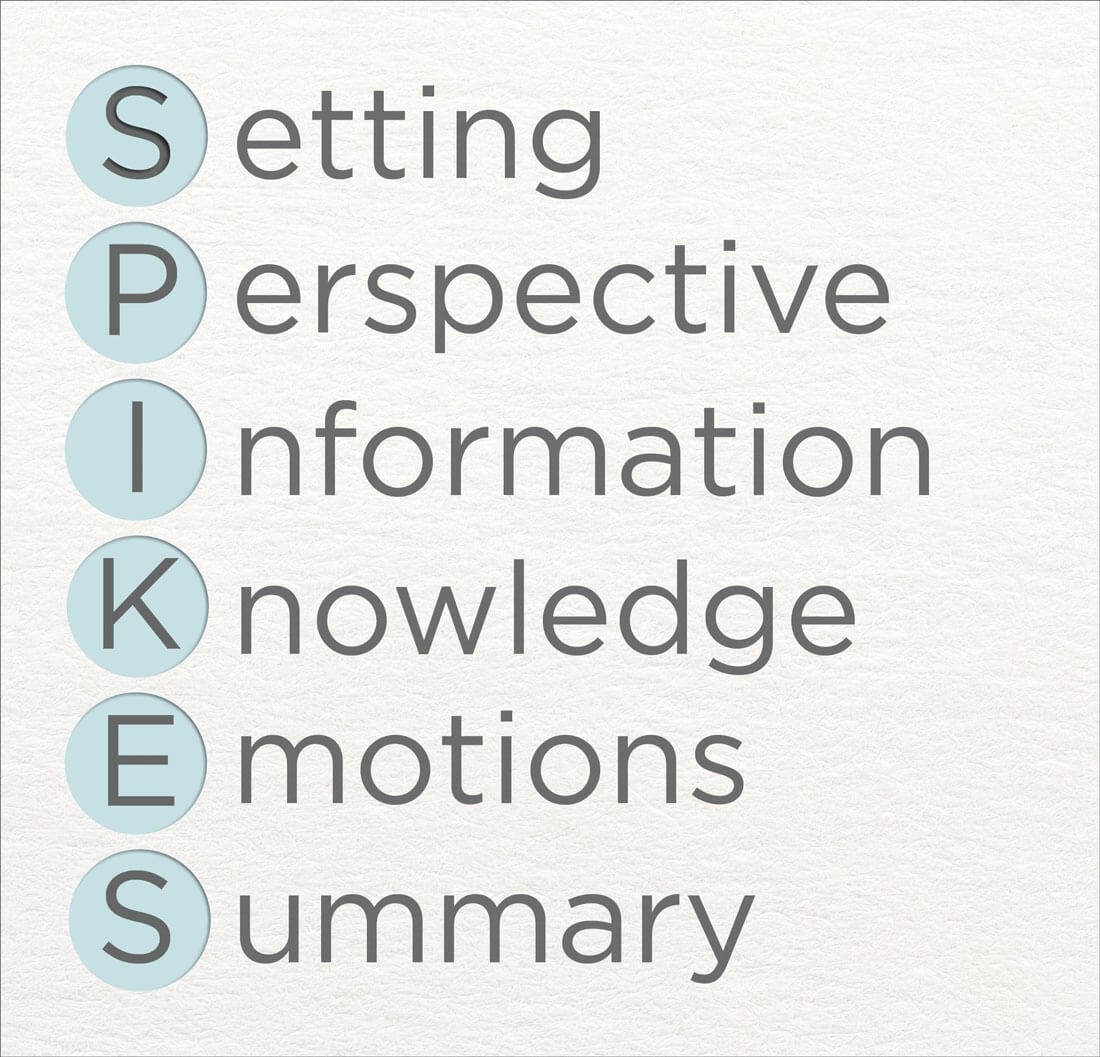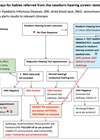Delivering bad news well takes experience and time. The Ida team recommend the SPIKES protocol; providing structure for relaying bad news, giving confidence to those delivering it, and leaving recipients feeling cared for and informed.
It’s among the most distressing parts of an appointment for both clinician and client and, while delivering bad news comes with the territory for those working in hearing care, who wouldn’t prefer removing wax or foreign objects from ears over telling new parents that their baby is profoundly deaf?

Yet, contrary to the rigorous training audiologists receive for all things technical, it seems most receive very little training in sharing news that could potentially change a person’s outlook on life [1]. Thankfully, communication frameworks for breaking bad news exist. They can provide structure to discussions and leave both parties more satisfied with how they unfold. Knowing key elements to expect and prepare for can provide comfort and confidence to those delivering difficult news and minimise distress in those receiving it, while still providing all the essential details.

The SPIKES protocol for delivering bad news
Created in 2000 for use in oncology, the SPIKES protocol is among the most common frameworks for delivering difficult news. Despite its origins, SPIKES is an effective aid for navigating bad news across patient groups. A 2018 study of 1337 patients diagnosed with a variety of diseases found that patient preferences for receiving bad news were consistent with SPIKES recommendations. And SPIKES has even been used in human resource management. Richter, König, Koppermann and Schilling adapted the SPIKES protocol for layoff notifications and showed that it enhanced employee perceptions of fairness and decreased stress for both managers and employees [2]. SPIKES is structured as a six-step process with four objectives: gathering information, transmitting medical information, providing support, and collaborating with the client on treatment. The six steps below support these objectives. The first three focus on getting started and identifying what the patient knows. The next three focus on sharing the diagnosis and addressing the patient’s feelings, questions and future.
Setting
Find a quiet, private space where you can speak uninterrupted. Involve the client’s loved one(s) when feasible.
Perspective
Learn what the patient knows or believes about the condition and listen to their thoughts about it without judgement.
Invitation
Ask the patient if you can tell them about the condition or diagnosis but be prepared to respect their right not to know. Offer to answer questions later if your client wants to digest the news first.
Knowledge
Give medical facts about the condition using language that is easily understood and avoid jargon. Give a ‘warning shot’ first to let the patient know that difficult news is coming. For example, you could say, ‘This is not the news we were hoping for.’ Also, chunk like information together so it is more easily remembered. Confirm the patient understands what you tell them and allow them to be emotional.
Empathy
Identify and name the emotion (‘I know you are scared’), show understanding (‘It is a difficult thing to process’), respect the patient’s right to their feelings, and voice support (‘I am here to help’). Ensure the patient has time to talk about their feelings, encourage them to do so, and provide your full attention when listening.
Summary/strategy
Give a summary of the appointment and ask if the patient has any further questions. Explore treatment options together and plan future steps with the client’s individual goals in mind. Finally, tell your client about the purpose and agenda of the next appointment or next step.
Keeping your client at the centre of the appointment
The SPIKES protocol isn’t only about delivering bad news better, it’s also about being person-centred during even the most trying times of an appointment. During uncomfortable situations, people sometimes gloss over important points or minimise the severity of a diagnosis but that really isn’t in the service of the patient. The goals and stages of the SPIKES protocol structure person-centred principles like understanding individual preferences, empathy, involvement of family and friends and shared goal setting into the discussion. This is helpful for gathering and relaying information, but these elements are also shown to build trust and improve client adherence and satisfaction.
"Sometimes medical knowledge takes a back seat to listening, understanding, and empathy"
Bearers of bad news often experience anxiety, guilt, and fear of judgement for informing about sad medical realities. While SPIKES has been shown to ease all of these and increase confidence in one’s ability to have difficult discussions, it can also help home in on what each individual client needs most – which is also a tenant of person-centred care.
In one example of audiologists not being attuned to the preferences of their clients, one study found that the audiologists believed the type of hearing loss was the most important information they needed to share with parents regarding a child’s hearing loss diagnosis. Parents, on the other hand, were more interested in discussing their feelings and the rehabilitation process. They were also interested in speaking with other parents of children with hearing loss [3]. Sometimes medical knowledge takes a back seat to listening, understanding, and empathy.
Hearing care professionals offer hope in the face of sadness
Nothing can absolve hearing care professionals of the need to deliver bad news. But having a playbook for how to do so can make the most of a bad experience for them and their clients.
While hearing care professionals may often be the bearers of bad news, they are also the hope for managing it. The SPIKES protocol helps get past the difficult conversations more effectively so clinicians and their clients can shift their energies to treatment and wellbeing.
Find more information about the SPIKES protocol in the free Ida Institute course, Applying PCC in the Appointment, in the Ida Learning Hall:
https://idainstitute.com/ida_community/learning_hall
References
1. Gold R, Gold A. Delivering Bad News: Attitudes, Feelings, and Practice Characteristics Among Speech-Language Pathologists. Am J Speech Lang Pathol 2018;27(1):108–22.
2. Kitz CC, Barclay LJ, Breitsohl H. The delivery of bad news: An integrative review and path forward. Human Resource Management Review 2023;33(3):1–23.
3. Geal-Dor M, Adelman C. The child doesn’t hear? On breaking bad news as perceived by parents and audiologists. Int J Pediatr Otorhinolaryngol 2018;112:113–20.








